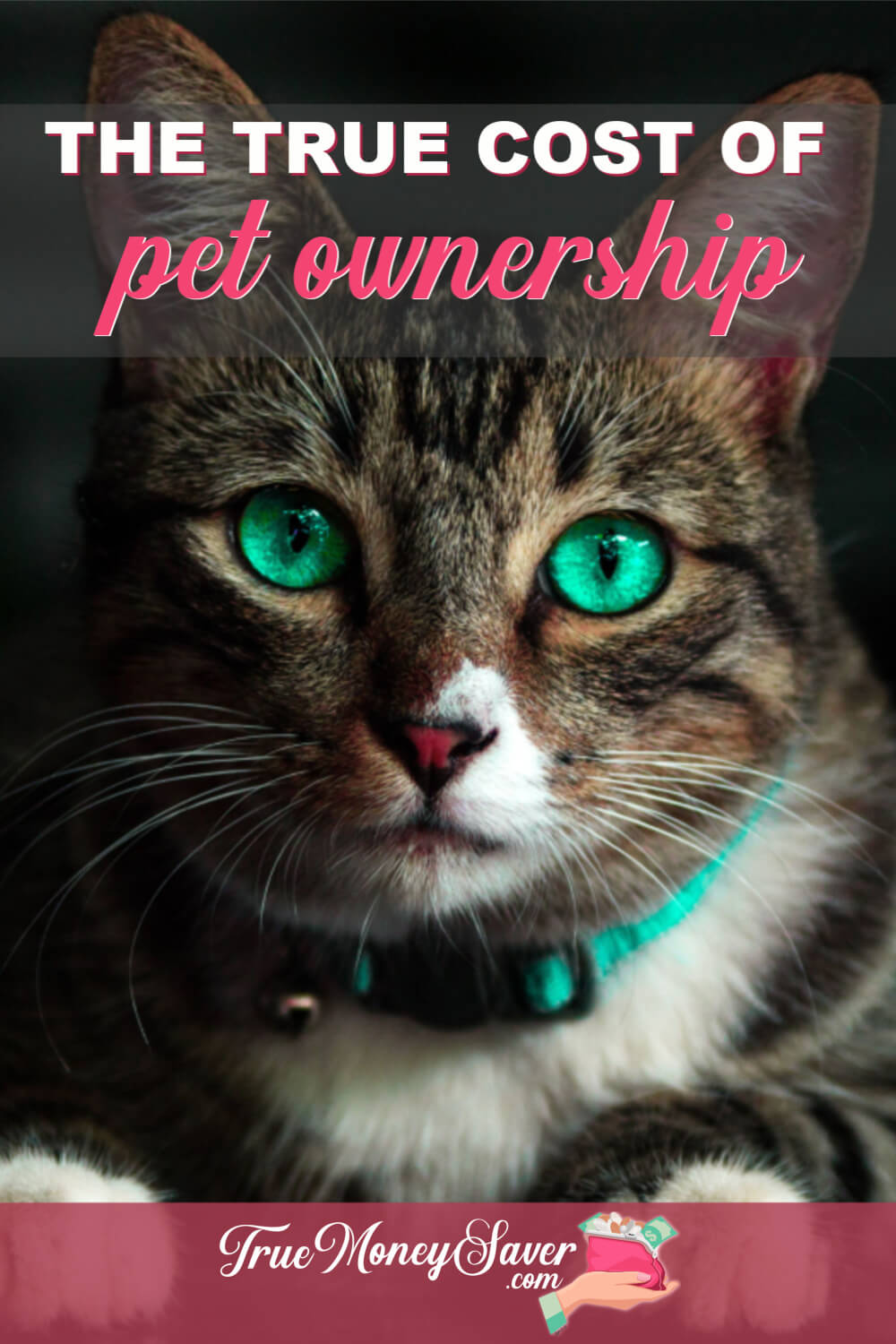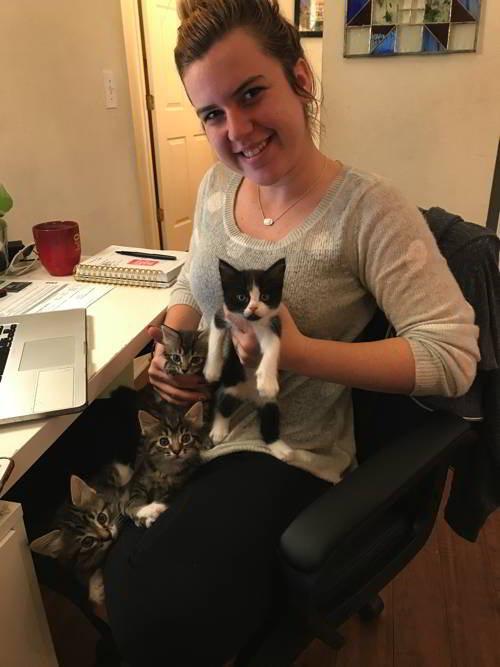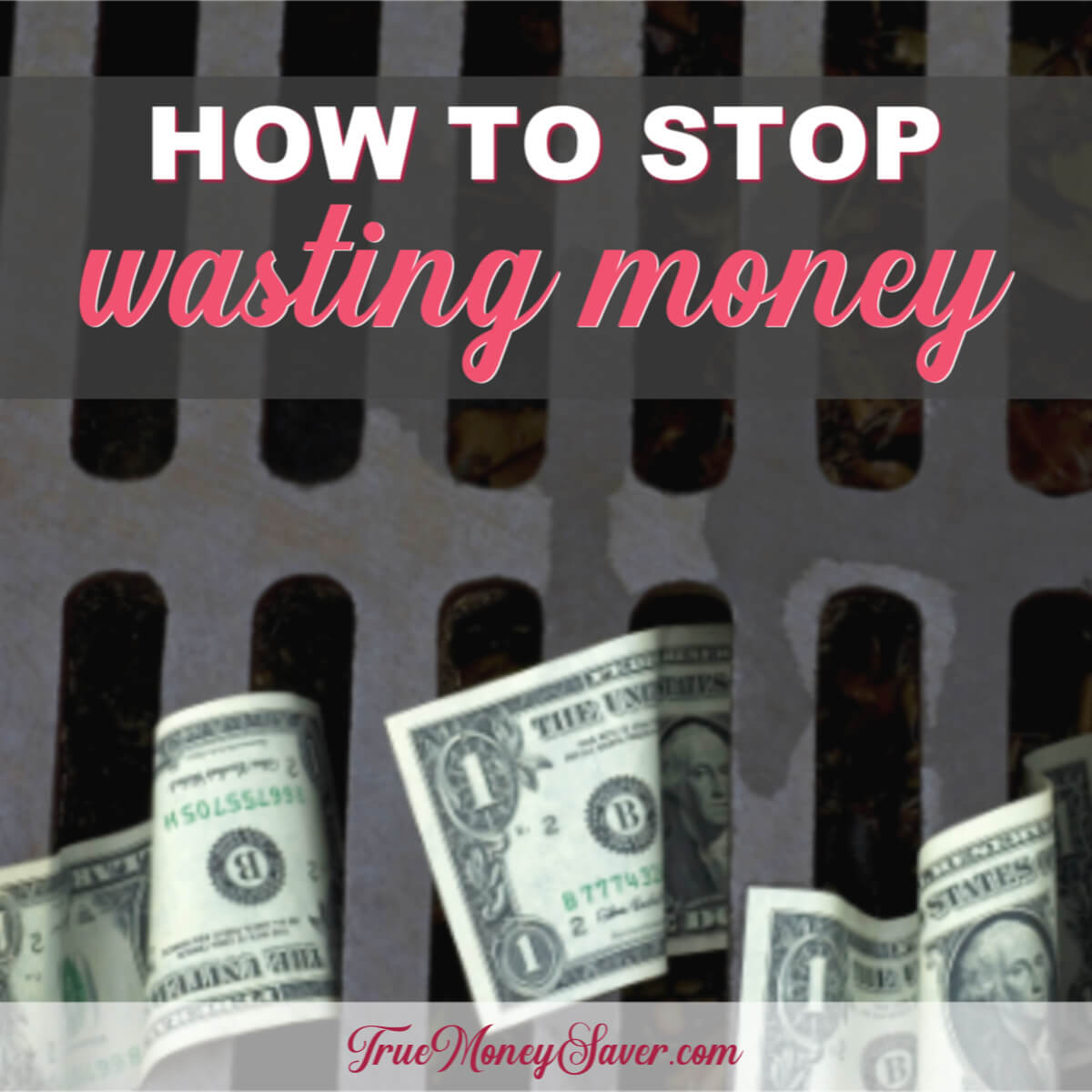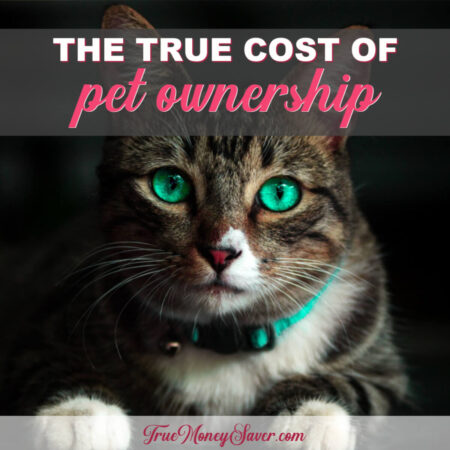 How do you feel about pet ownership? A few years ago a Mommy friend of mine posted this Facebook Status Update on December 26:
How do you feel about pet ownership? A few years ago a Mommy friend of mine posted this Facebook Status Update on December 26:
“Survived another Christmas without giving in to getting a Wii or another animal. Whew! How long can we make it?”
And she is right, pets are such a fun gift to give your kids at Christmas. In prior years our pet ownership has included Hermit Crabs, Turtles, and even a Hamster for Christmas.
While adding a furry friend to your home might sound like a great idea, pet ownership can get expensive very quickly.
I would say that very few regret their decision to adopt a furry friend. However, I know when I was caught up in the excitement of buying a hermit crab for our daughter Annabelle, I wasn’t fully considering the true potential costs of owning a pet either.
If you are considering pet ownership by adopting your own furry friend, there are many costs to consider. The cost of pet ownership goes far beyond the initial adoption fee.
Although pet ownership can be expensive, you should truly outweigh the costs so you know financially what you are getting and what you can afford.
Plus, the cost of owning a pet can be extremely expensive if there was an accident. Do you have disposable income for those days?
And, while people may think the initial pet costs might be minimal, they can really add up quickly if your not careful. So it’s better to be informed than blindsided!
Here are the First-Year and Annual Costs of owning several different types of popular pets so you can make an informed decision for which lucky animal gets to join your family in the near future.
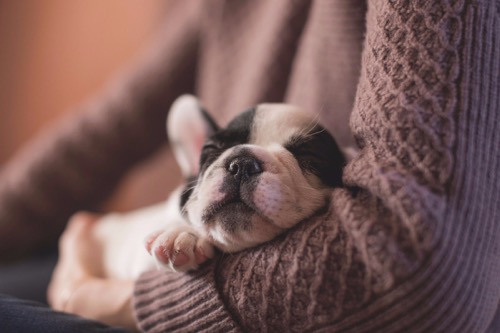
Dogs (Ave. Lifespan 12-14 Years)
Adopting a dog from an animal shelter can cost as little as $50 in fees. (Obviously if you go to a breeder you’ll pay around 10 times that). But you also have to consider the other initial first-year expenses of pet ownership such as food, vet visits, training, grooming, toys, treats and dental cleanings.
Another benefit of adopting a dog from reputable shelters is because they often come already spayed/neutered (a $200 expense), vaccinated and micro-chipped. Plus, they will most likely already have had their initial medical exam which typically includes deworming and basic blood tests and costs around $70.
The initial supplies you’ll need include a collar and a leash, a crate, a bed and food and water bowls. For small dogs that’ll cost around $100, Medium dogs $170 and large dogs $225.
As you can see, the cost of owning a pet is already racking up.
BONUS FREE DOWNLOAD
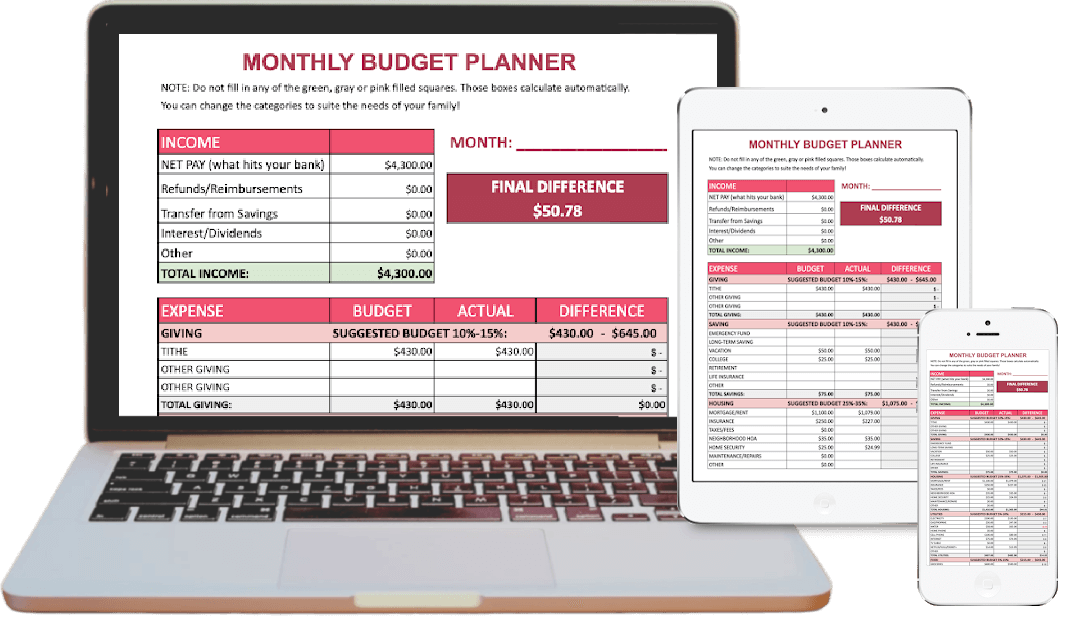
Create A Plan For Your Money
These FREE Budgeting Spreadsheets will help you keep a pulse on your money (from the palm of your hand).
Food is the most predictable cost of pet ownership. Prices will vary depending on the age and size of your dog, and the brand you decide to feed it. But as a good estimate, I’m using $55 for Small dogs, $120 for Medium Dogs and $235 for Large Dogs. Obviously, using coupons, rewards and looking for sales will help keep the pet costs of food down.
Toys are very important for dogs because they keep them healthy with exercise and give them something to chew so they don’t use your shoe instead. (Note: this expense is not avoided with a cat, our Tiger ate 4 of my computer cords during his first year costing me $80 each! They are NOT snakes, Tiger. Yikes!). Toys will cost approximately $40/year for small dogs, $55/year for medium dogs and $75/year for large dogs.
Preventative veterinary care is the number-one way to cut pet care costs. (If you can catch something before it becomes a problem, you’ll save loads of money down the road). A yearly exam will cost you just over $200.
Grooming Costs Not Included
I’m not going to include grooming costs in this estimate because I think part of pet ownership is teaching our children how to appropriately care for their pets. Of course, if your dog’s hair needs to be clipped on a regular basis, I would include this in your cost analysis. Groomers can charge anywhere from $40 for small dogs to up to $90 for large dogs and this should be done every month. And you might also need to include nail trimming, and any other special treatments your dog might need. Oh, and don’t forget to include the tip!
What IS important to include is that before you get a dog, sit down with a calendar and map out the schedule for regular baths, brushing, nail trimming and teeth brushes. Add these dates to the kid’s chore charts so that they know they cannot be forgotten. If you were to “outsource” this job, I estimate it’ll cost you $265/year for small dogs, $320/year for medium dogs and just over $400/year for large dogs.
Dog Walking Costs Not Included
Mixed-breed, 10-to 20-pound dogs are typically the least expensive canines to own, according to Dr. Louise Murray, vice-president of the American Society for the Prevention of Cruelty to Animals’ (ASPCA).
First Year Cost: Small Dogs: $445, Medium Dogs: $595, Large Dogs: $785 (initial adoption fee, collar & leash, crate, bed, toys, and food)
Side Note: You might want to take them to puppy training which costs $110.
Annual Cost: Small Dogs: $295, Medium Dogs: $375, Large Dogs: $510
Cats (Ave. Lifespan 12 Years)
{yes, that is my Annabelle holding our litter of kittens.} Cats are slightly less expensive than their canine counterparts when it comes to pet ownership. And the initial cost is really the same as an ongoing cost to see the vet each year and paying for food and litter.
Adoption is often the cheapest option when purchasing a cat. Adopted kittens typically cost around $50, while you might even be able to get adults cats for less. As with dogs, adopted kitties from reputable shelters often come already spayed/neutered, vaccinated and micro-chipped, helping cut initial medical expenses, which typically include deworming and basic blood tests ($70).
Cat’s have the option of eating dry food, wet food or both. Wet food may be a bit pricier, but it can be an important component of your kitty’s diet. Urinary tract infections are one of the most common health problems in cats, and they often result from too much dry food. I like to feed my cats one can of wet food each day and I leave a bowl of dry food out all the time for them to eat from as they wish. I estimate you’ll spend $100 per year on cat food (taking in to account a combination of wet & dry food).
What Cats Really Need
The important products you need to provide cats (like the toys for dogs) are scratching posts ($10 each) and a litter box ($10). I have lots of friends who have a cat door that allows their cats to go outside during the day (allowing them not to have the litter box expense). My cats are afraid to go outside, so we have a couple of litter boxes to ensure they never go anywhere else. I estimate you’ll need 1 jug of litter every other week (approx $6 each) making the annual cost of litter $156.
The good news is that cats require less grooming (they take care of much of it on their own). And they don’t require paid dog-walkers while you’re away. In fact, for a vacation 3 days or less you could just leave out extra food and an extra box of litter and they won’t even know you were gone!
First Year Cost: $326 (initial adoption fee, litter box & litter, scratching post, toys, and food)
Annual Cost: $346
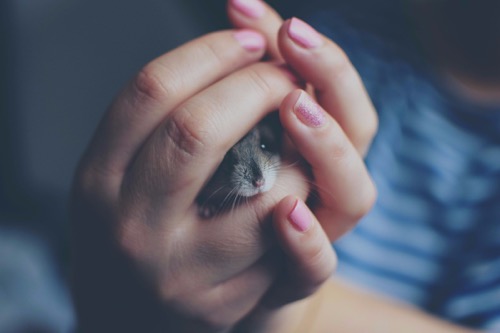
Hamsters (Ave. Lifespan 3 Years)
Hamsters are probably the most affordable pet.
After the initial set up costs of purchasing the animal (approx. $15), cage ($40), running wheel ($25), and toys ($10), then the greatest ongoing expenses are only for food ($50/year) and bedding ($200/year). But you can save money by shredding newspaper. (Let it sit for two weeks so that the ink fully dries and doesn’t get on everything).
You might never even need to take them to the vet so long as you keep some type of chew-toy in the cage because their teeth never stop growing. If the teeth get too long, the hamster won’t be able to eat and will need medical attention. But these are one of easiest pets for pet ownership.
First Year Cost: $345 (pet, cage, wheel, toys, bedding & food)
Annual Cost: $210 (bedding, food & occasional chew toy)
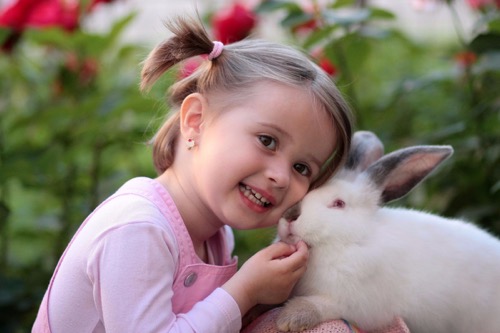
Rabbits (Ave. Lifespan 10-12 Years)
I’ve had lots of friends who love having bunnies as pets. Did you know they can even be litter trained, just like a cat?!
Preventive care is the best way to keep bunnies on a budget. Get them spayed or neutered ($160) to reduce the risk of cancer and urinary tract infections (those would be expensive medical bills later).
Other initial expenses for pet ownership include a cage and litter box ($125), bedding ($200/year), toys ($40) and grooming tools ($20). The initial purchase price is usually between $15 and $60. But, you could probably find one for free if you ask friends on Facebook.
Food will be the biggest component of keeping medical costs down. The average annual cost for rabbit food is $190. You need to make sure to have the right balance of hay, fresh vegetables, and high-fiber pellets, which are critical for grinding teeth down to make sure they can eat. To cut food costs, you could also start a garden in your backyard that both you and your bunny can enjoy.
First Year Cost: $750 (purchase price, spay or neuter, cage, litter box, toys, grooming tools, food and bedding)
Annual Cost: $470 (annual vet visit, litter, bedding, food & high-fiber pellets)
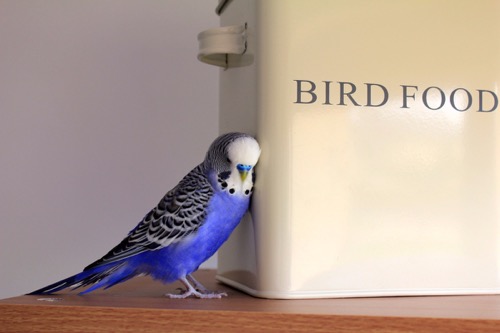
Parakeet (Ave. Lifespan 15 Years)
On the more exotic (and sometimes more affordable) side of pet ownership, are birds. A Parakeet will only cost between $12 to $65. The initial set up for a flying friend is the cage and furnishings ($70), food (which should include seeds, nuts, and fresh fruits, approx $75), toys & treats (approx $25) and vet visits ($85). Birds do best with a seed-only diet and require plenty of natural sunlight.
I just want to mention that the more expensive variety of a Macaw could cost $800 to purchase initially. However, they have a 50-year life expectancy.
A parakeet costs about $575 a year, or $9,850 over an average 10-year lifetime.
First Year Cost: $267 (purchase price, cage, food, toys, and vet visits)
Annual Cost: $185
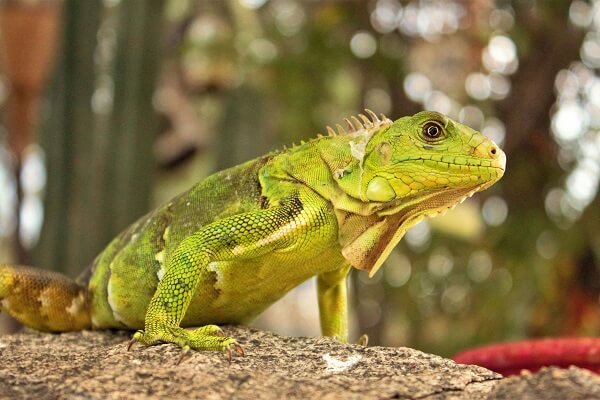
Reptiles (Iguanas Ave. Lifespan 10 Years)
Cold-blooded animals like lizards, geckos, and snakes require a surprising array of set-up equipment costs because they need to live in specific conditions for pet ownership including a tank, tank furniture, a UVB light and hood, heating devices, a thermometer and a hydrometer to test moisture levels.
Glass aquariums with proper heating and lighting are vital to keeping reptiles’ healthy and cost between $100 and $180. Although it is possible to watch the marketplace on Facebook for a good price on a used one. You’ll also need food and water bowls, a thermometer, climbing branches and fake foliage which will cost between $30 to $55. The price of the reptile itself can also vary significantly, depending on what type of species you choose.
Now, this part is important, when you first get your reptilian pet, be sure to take your new pet to a veterinarian who specializes in reptiles. Many reptiles must be de-wormed and can carry gastrointestinal parasites that can be passed on to humans. The parasites are super easy to get rid of, under proper identification and treatment. So don’t skimp on this part of pet ownership and face more expensive problems later (approx $70).
Annual costs include material for the bottom of the tank ($80), food (at least $100, but could be more depending on the reptile you choose) and regular vet visits ($70). Food costs will vary greatly depending on what type of reptile you purchase. Some species, such as geckos and dragons, eat crickets, while iguanas eat mostly fresh fruits and vegetables, which will rack up a higher monthly bill. UV light bulbs will need to be replaced once or twice a year (approx $20 on Amazon)
First Year Cost: $300 plus cost of reptile (tank and accessories, food & first visit to the vet)
Annual Cost: $270 (food, tank replacement items & light bulbs)
BONUS FREE DOWNLOAD

Create A Plan For Your Money
These FREE Budgeting Spreadsheets will help you keep a pulse on your money (from the palm of your hand).

Goldfish (Ave. Lifespan 10 Years)
Unless you’re looking to go the exotic route of pet ownership, with ornate saltwater species and plants, the cheapest pet to own is probably a fresh-water fish. A freshwater fish could cost you anywhere from $1 to $25, depending on the species.
The set-up will definitely be the most expensive part, with a basic 20-gallon tank, filter, air pump, gravel & lighting costing close to $200. Some electricity will be used to run the light and filtration system, so expect a slight increase in your electric bill.
However, the food bill is where you’ll make up for the cost compared to other pets because it will cost only about $20 each year.
Fish Alternative
A neat alternative would be to get a Beta Fish. They are way less expensive, overall, because they breathe fresh air so they don’t require any filter nor air pump! I used to keep one on my kitchen counter inside a bamboo plant and I loved it. The only challenge is weekly water changes and daily feedings (there are vacation feeders available).
First Year Cost: $230 (initial cost, tank, and food)
Annual Cost: $20 plus electricity
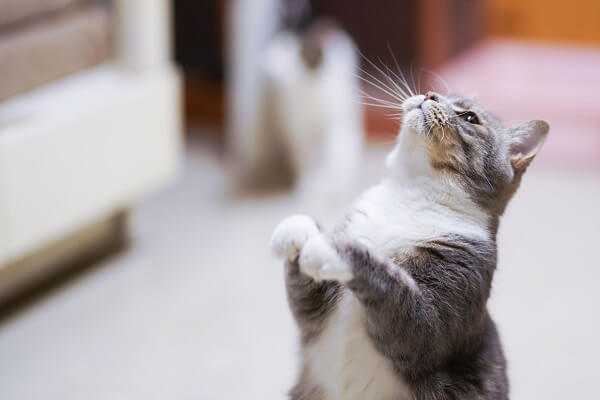
Pet Sitting Was Not Included
Of course, we would love to take our pets on vacation with us, but don’t forget that it should be a cost to include in your pet cost analysis budget. Most boarding places cost $20 a night for a dog. While that may seem low, add up a week or two per year and now you have added another couple hundred dollars to the cost of owning your dog. It may be easier for relatives or friends to pet sit smaller animals, but don’t forget to include these potential costs into your pet costs.
I think pets are a significant and special gift to give your kids at Christmas and any time of the year.
And while the cost can be significant, the unconditional love you gain is, well, priceless.
Although pet ownership can be expensive, you should truly outweigh the costs so you know financially what you are getting and what you can afford.
Plus, the cost of owning a pet can be extremely expensive if there was an accident. Setting aside money in a savings account just for vet bills might be a good idea.
And, while people may think the initial pet costs might be minimal, they can really add up quickly if you’re not careful. So it’s better to be informed than blindsided before you pick out a pet.
By looking at the different costs, you can make an informed decision about which pet is best to add to your family.
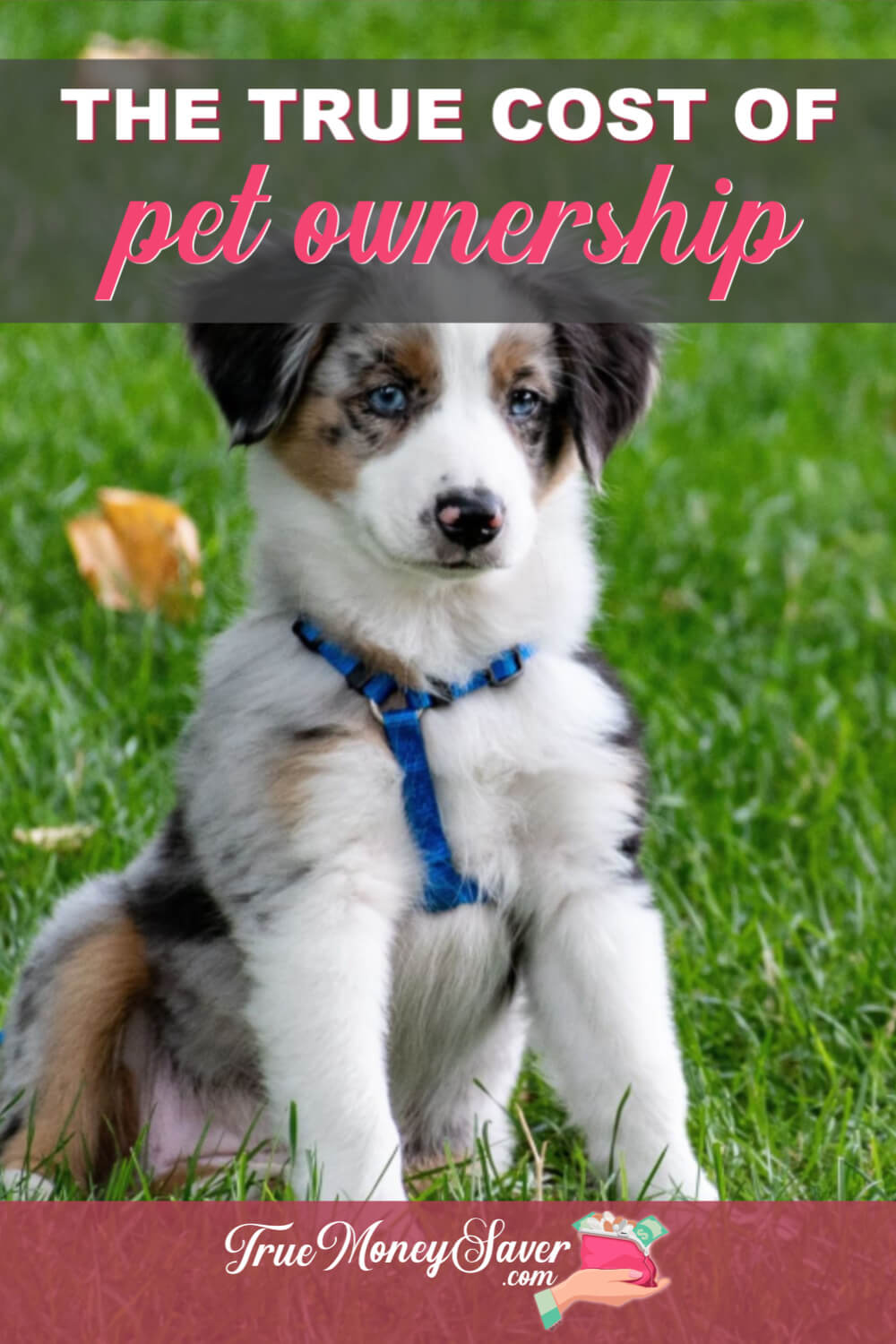
More Fun Articles To Read:
